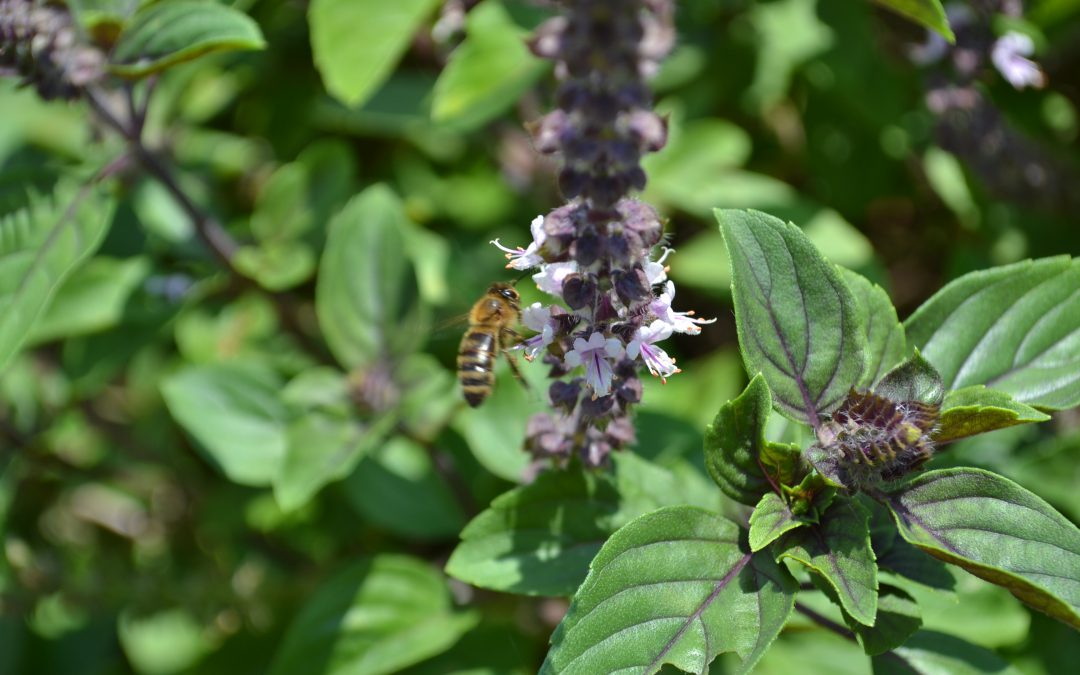
by Beth Bolles | Sep 30, 2021
We hope that you enjoyed the live Q&A with the University of Florida Extension Agent Evan Anderson and Research Coordinator Chris Oster of the UF Honey bee Research and Extension Lab. Below are the questions with the publication links that were provided during the discussion.
What is the best way to get started with a 0.25 acre, residential yard?
How to keep the bee colony in the winter?
How much room should I have for a couple small hives? How many hives should I start with…3?
How much time is involved in the care of the bees and their hive?
Is there a small hive available for a tiny back yard?
What equipment is needed to get started?
Does placing bee hives a certain minimum distance apart help to reduce honey bee colony mortality?
Does Dr. Leo Sharashkin’s Russian concept of horizontal hives fit the environment of the Florida Panhandle?
What is the best treatment for varroa mites?
Identifying behaviors displayed, in order to split the hive. Best time to add supers?
What are good plants for honey bees?
I live near farm fields that use commercial pesticides, can I still bee keep? What are the concerns and how do I mitigate them?
As a first year beekeeper, does all of the rain we’ve experienced this year create any problems that I should be looking for?
Should we be worried about the Asian Giant Hornets in the Florida Panhandle?
We have identified honey bees, cutter bees and carpenter bees in our garden. Should we provide a bee house?
Any killer bees in the area?
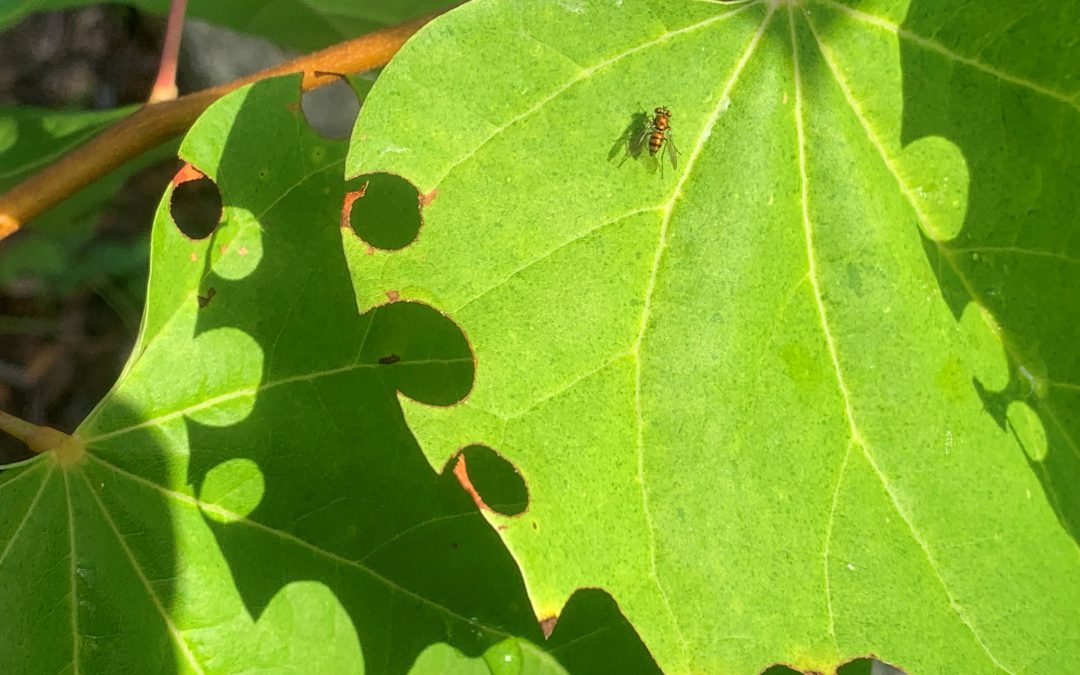
by Beth Bolles | Aug 18, 2021
In a garden with a variety of flowers, pollinators will be abundant. Sometimes we don’t always recognize the specific pollinator when we see it, but there are some native pollinators that leave other signs of their activity. One of our medium-sized native bees will leave a distinctive calling card of recent activity in our landscape.

Leafcutter bees have collected circular notches from the edges of a redbud tree. Photo by Beth Bolles, UF IFAS Extension Escambia County.
If you see some of the leaves of trees and shrubs with distinct circular notches on the edges of the leaves, you can be sure the Leafcutter bee is present. The females collect the leaf pieces to make a small, cigar-shaped nest that may be found in natural cavities, such as rooting wood, soil, or in plant stems. Each nest will have several sections in which the female places a ball of pollen and an egg. The emerging larvae then have a plentiful food source in order to develop into an adult bee.
When identifying a leafcutter bee in your landscape, look for a more robust bee with dark and light stripes on the abdomen. These bees also have a hairy underside to their abdomen where they carry the pollen. When loaded with pollen their underside will look yellow.
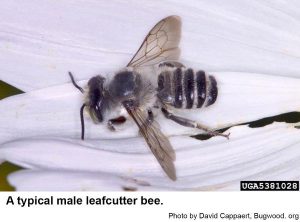 Leafcutter bees are solitary bees that are not considered aggressive. A sting would only be likely if the bee is handled. Your landscape will have many plants that a leafcutter may use for nesting material. The pollinating benefits of these bees far outweigh any cosmetic injury to the plant leaf margins.
Leafcutter bees are solitary bees that are not considered aggressive. A sting would only be likely if the bee is handled. Your landscape will have many plants that a leafcutter may use for nesting material. The pollinating benefits of these bees far outweigh any cosmetic injury to the plant leaf margins.
Visit Featured Creatures to see a photo of the leaf pieces made into a nest.
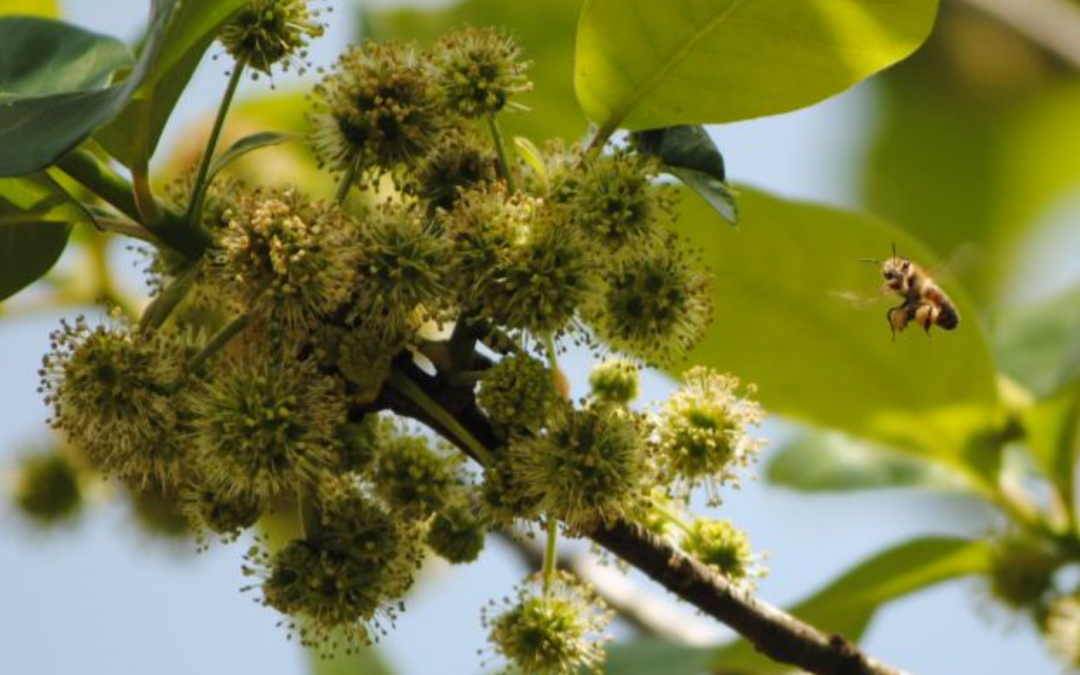
by Ray Bodrey | May 6, 2021
The Annual Tupelo Honey Festival will be held Saturday, May 15th from 9 am – 4 pm central time at Lake Alice Park in Wewahitchka. This is your chance to take part in a local treat. Area honey producers will be on hand to sell their honey in a variety of sizes. There will also be food, art and crafts, and live music.
For decades, tupelo honey has been synonymous with Gulf county. The nectar from the tupelo gum tree (Nyssa ogeche), produces some of the finest honey in the world. The common name “tupelo” is derived from language of the Muscogee Nation, also known as the Creek Indian Nation. The meaning of the word is “swamp tree”, as this tree flourishes in areas of wet soils and seasonal flooding. Gulf County is home to one of the largest tupelo forests on earth.
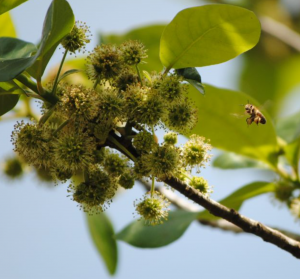
A honeybee visiting tupelo blossoms. Photo Credit: Gulf County Tourist Development Council.
The tupelo bloom season lasts from approximately mid-April to the end of May. This is an anxious time for beekeepers. Tupelo blooms are very temperamental and delicate in nature. For this short period, beekeepers hope for little wind or rain and no cold temperatures, as any of these factors can make or break tupelo honey production. Regardless of seasonal impacts, the demand for Gulf County’s tupelo honey never subsides.
Please visit http://www.tupelohoneyfestival.com/ for more information on the festival. For more information on beekeeping, contact your local county extension office.
UF/IFAS Extension is an Equal Opportunity Institution.
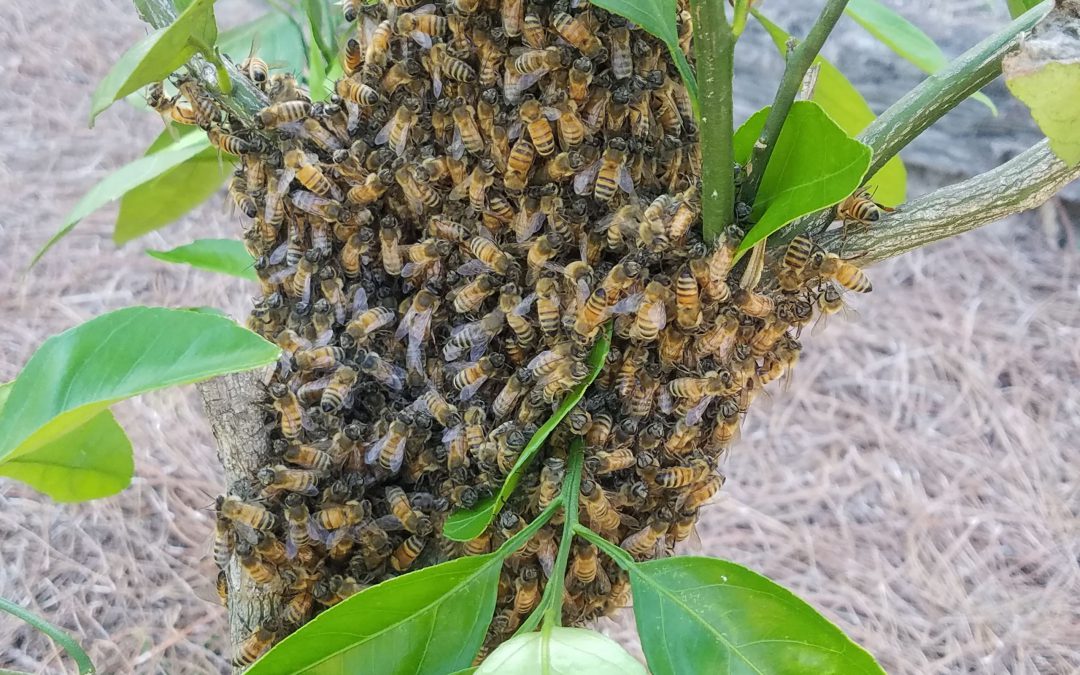
by Evan Anderson | Feb 25, 2021
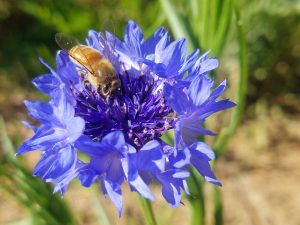
A worker bee gathering nectar and pollen.
As the weather warms, it seems that all kinds of living things start stirring. From birds to bees, plants to ants, and gnats to tourists, the world comes alive in the spring. It’s those bees we’ll discuss here, because every year they swarm, and that can cause some consternation among the homeowners whose houses they invade.
Honeybees are vitally important to our wellbeing, as they act as pollinators for many of our crops. They supply us with honey and wax and are a source of livelihood for many individuals. Important though they may be, they can sometimes become a nuisance.
Honeybees are eusocial organisms. Each honeybee lives in a colony or hive that it cannot survive without. In fact, it can be helpful to think of the entire hive as a single organism, even if it is made up of many individuals. The queen bee is the only one who lays eggs, but she cannot forage for her own food. Workers supply pollen and nectar to the hive but cannot reproduce on their own. Drones, or male bees, exist only to mate and would quickly die without the support of their sisters.
When a queen reproduces, she lays eggs that develop into new workers. When the time is right, she may lay eggs that develop into drones, or new females may be fed a substance called royal jelly that causes them to develop into new queens. These new drones and queens are born in preparation for a new hive to be created rather than to add more bees to the existing one. The old queen will be the adventurous one, so the workers put her on a diet. Once she has lost weight (to make it easier for her to fly), she takes half the workers in the hive and goes out in search of a new place to live. One of the new queens, after mating, returns to the nest and prepares to continue the work of her predecessor.
When the old queen leaves with her coterie, this is called a swarm. When weather warms and nectar begins to flow, the

A swarm of bees looking for a new home.
bees travel from place to place looking for a good spot to live. Hollow cavities in trees are a favorite spot, but bee scouts often find what they think are perfect living places in our homes or sheds. While they are searching for a new place to set up shop, they may rest on trees or branches in large clumps. Do not be alarmed if you see one, as it does not mean they are nesting where they’ve stopped. Wait a while to see if they leave on their own or contact a local beekeeper to see if they want to collect the swarm.
If bees have taken up residence somewhere they’re not welcome, there are companies and individuals who may be able to collect the bees rather than destroying them. If removal is not an option, nuisance bees may be eradicated under Florida law, but this must be done by a certified Pest Control Operator.
If you have a swarm or hive on your property, check with the Department of Agriculture (Bee Removal or Eradication in Florida Resources) to find information and for a list of bee removal specialists. See our EDIS publication on choosing a pest control operator at Choosing the Right Pest Control Operator for Honey Bee Removal: A Consumer Guide. You can also contact your local Extension office for help with finding someone local.
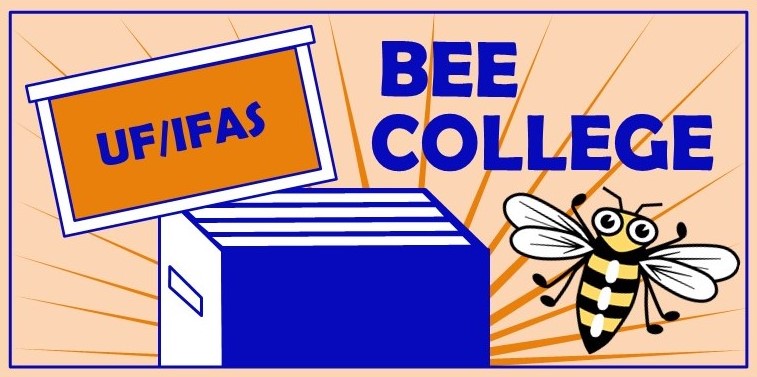
by Matthew Orwat | Feb 18, 2021
Join the University of Florida/Institute of Food and Agricultural Sciences (UF/IFAS) Honey Bee Research and Extension Laboratory for the 2021
Spring Virtual UF/IFAS Bee College! Imagine
FOUR Saturday mornings in March 2021 of all things honey bees. Those new to beekeeping can follow the beginner track, while more experienced beekeepers can participate in sessions focused on honey bee stressors and other advanced topics related to beekeeping. Speakers include UF/IFAS faculty, staff, students, members from the Florida State Beekeepers Association, specialists from Bee Informed Partnership, and other honey bee specialists around the world! Participants can choose to attend one session or all four as a
“Package Deal” for a reduced fee.
Register for the “Package Deal” or for each session separately– whatever works best with your schedule.










